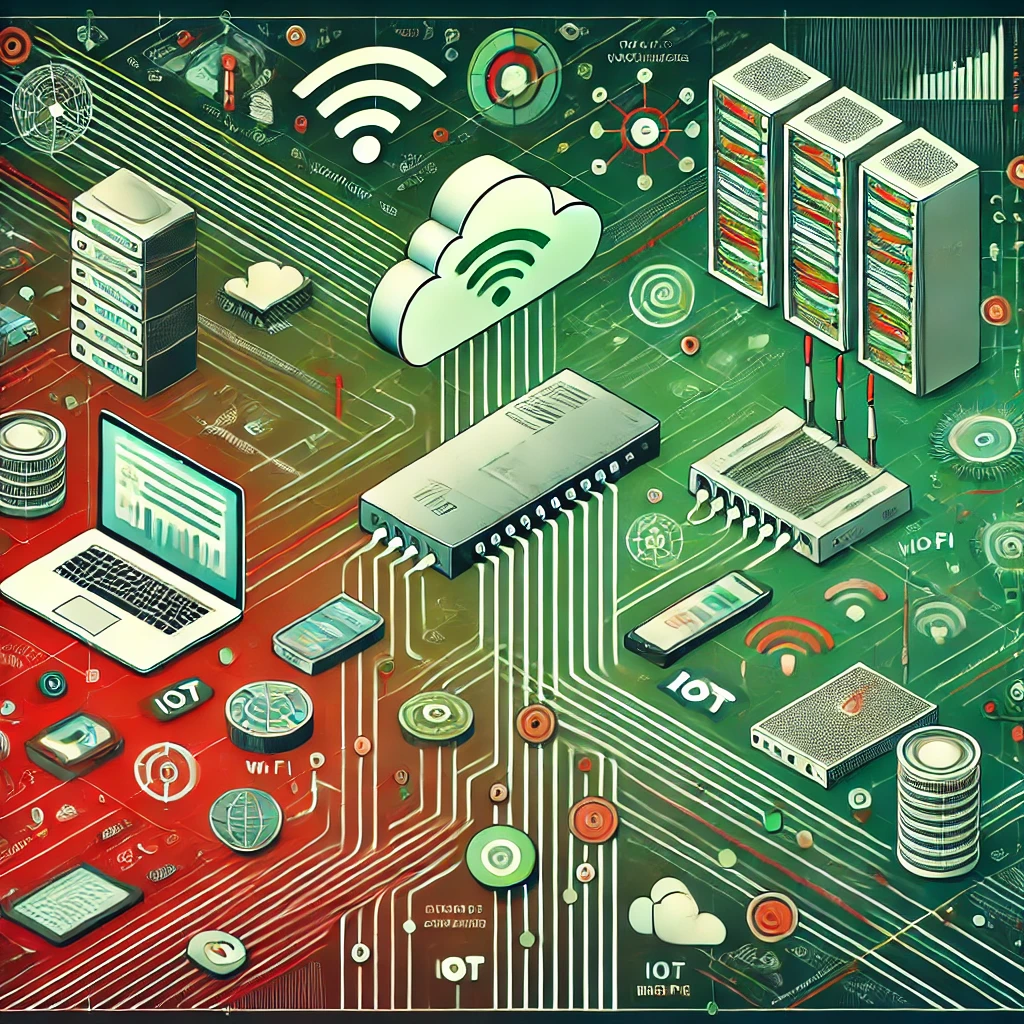Peer-to-Peer vs. Client-Server Networks

Categories:
4 minute read
In the realm of computer networking, understanding the fundamental differences between peer-to-peer (P2P) and client-server networks is crucial. Both architectures have their unique strengths and weaknesses, making them suitable for different applications. In this comprehensive guide, we will delve into the intricacies of these two network types, exploring their characteristics, advantages, disadvantages, and real-world applications.
Peer-to-Peer (P2P) Networks
In a P2P network, each computer acts as both a client and a server. This means that every device can share resources, such as files, printers, or internet connections, directly with other devices on the network. No central authority or dedicated server is managing the network.
Key Characteristics of P2P Networks:
Decentralized: No central server controls the network.
Direct Communication: Devices communicate directly with each other.
Scalability: Easy to add or remove devices.
Flexibility: Can be used for various purposes, including file sharing, gaming, and video conferencing. Advantages of P2P Networks:
Cost-Effective: No need for expensive server hardware.
Simplicity: Easy to set up and manage.
Reliability: If one device fails, the network can still function.
Scalability: Easily expand the network by adding more devices. Disadvantages of P2P Networks:
Security Risks: Vulnerable to attacks like malware and hacking.
Performance Issues: Can become slow with many users.
Limited Control: Difficult to manage and monitor the network.
Resource Constraints: Relies on the resources of individual devices. Real-World Applications of P2P Networks:
File Sharing: Popular for sharing large files, such as movies, music, and software.
Gaming: Enables multiplayer gaming without the need for dedicated servers.
Video Conferencing: Facilitates real-time communication between multiple users.
Distributed Computing: Leverages the combined processing power of multiple devices for complex tasks. Client-Server Networks
In a client-server network, devices are divided into two categories: clients and servers. Clients request services from servers, which provide those services. Servers are powerful computers that store and manage resources, while clients are typically less powerful devices that access those resources.
Key Characteristics of Client-Server Networks:
Centralized: A central server controls the network.
Hierarchical Structure: Clear distinction between clients and servers.
Security: Enhanced security measures can be implemented on the server.
Scalability: Can handle a large number of users and devices. Advantages of Client-Server Networks:
Centralized Management: Easier to manage and control the network.
Enhanced Security: Strong security measures can be implemented on the server.
Reliable Performance: Servers can handle heavy workloads and provide consistent performance.
Scalability: Easily expand the network by adding more servers. Disadvantages of Client-Server Networks:
Higher Cost: Requires significant investment in server hardware and software.
Complex Setup: More complex to set up and configure than P2P networks.
Single Point of Failure: If the server fails, the entire network can be disrupted.
Dependency on Server: Clients rely on the server for resources and services. Real-World Applications of Client-Server Networks:
Corporate Networks: Used to share files, printers, and other resources within an organization.
Web Servers: Host websites and web applications.
Email Servers: Manage and deliver email messages.
Database Servers: Store and manage large amounts of data.
Game Servers: Host multiplayer games and provide centralized game services. Choosing the Right Network Architecture
The choice between a P2P and a client-server network depends on various factors, including:
Number of Users: For small networks with a limited number of users, a P2P network may be sufficient. For larger networks with many users, a client-server network is more suitable.
Security Requirements: If security is a major concern, a client-server network with strong security measures is recommended.
Performance Requirements: For demanding applications, a client-server network with powerful servers can provide better performance.
Management Complexity: P2P networks are simpler to manage, while client-server networks require more administrative overhead.
Cost Considerations: P2P networks are generally more cost-effective, while client-server networks can be more expensive due to the cost of server hardware and software. Hybrid Networks
In some cases, a hybrid network that combines elements of both P2P and client-server architectures may be the best solution. This approach can provide the benefits of both network types, such as the flexibility of P2P networks and the centralized management of client-server networks.
Conclusion
By understanding the key differences between P2P and client-server networks, you can make informed decisions about which architecture is best suited for your specific needs. Consider factors such as the number of users, security requirements, performance needs, management complexity, and cost when choosing the right network for your organization or personal use.
Additional Considerations:
Network Topology: The physical layout of the network, such as bus, star, ring, or mesh topologies, can also impact performance and reliability.
Network Protocols: The communication protocols used to transmit data, such as TCP/IP, HTTP, and FTP, play a crucial role in network functionality.
Network Security: Implementing strong security measures, such as firewalls, intrusion detection systems, and encryption, is essential to protect network resources from unauthorized access and cyberattacks. By carefully considering these factors and selecting the appropriate network architecture, you can build a robust and efficient network that meets your specific requirements.
Feedback
Was this page helpful?
Glad to hear it! Please tell us how we can improve.
Sorry to hear that. Please tell us how we can improve.